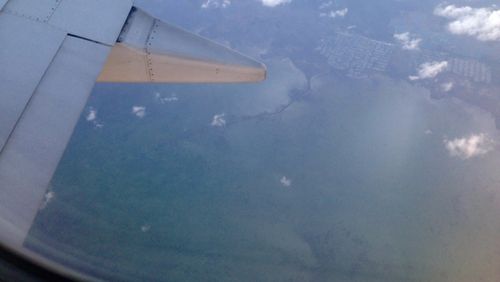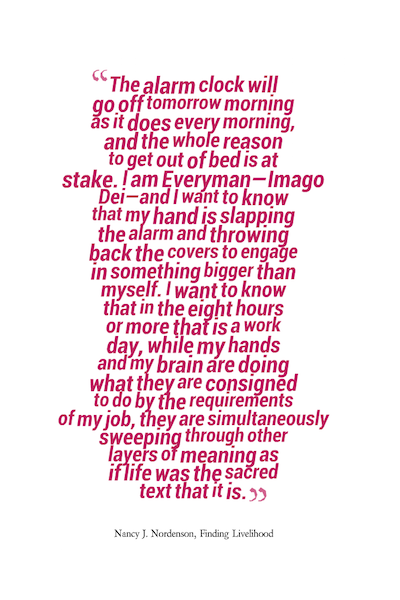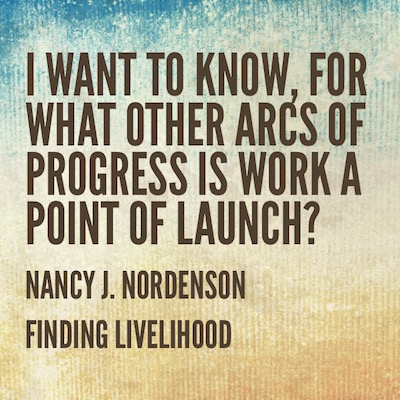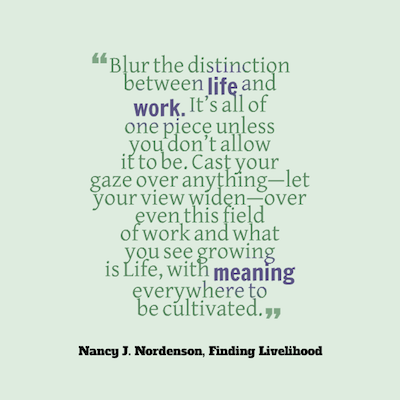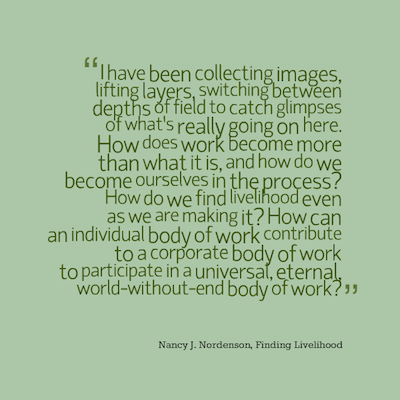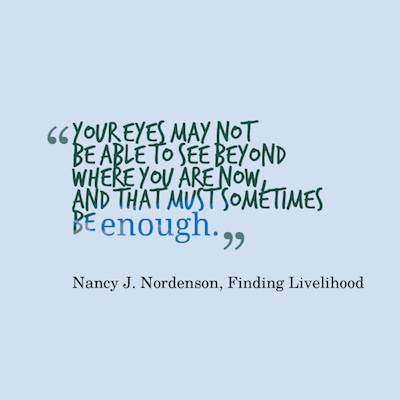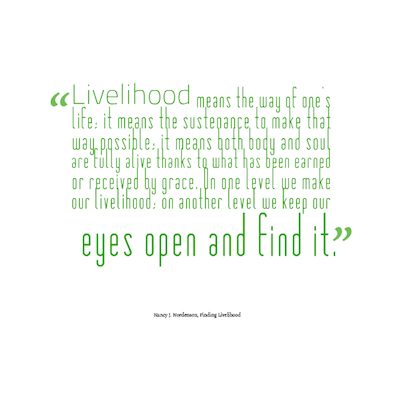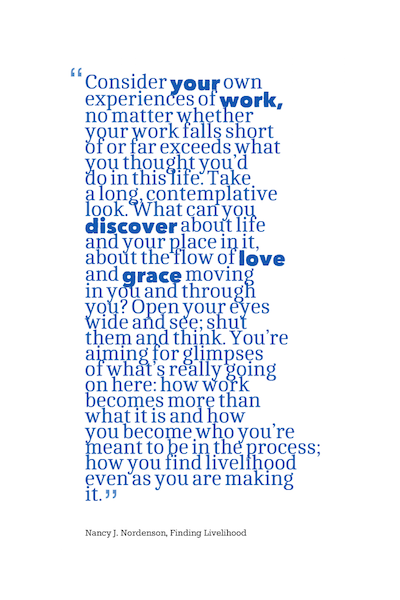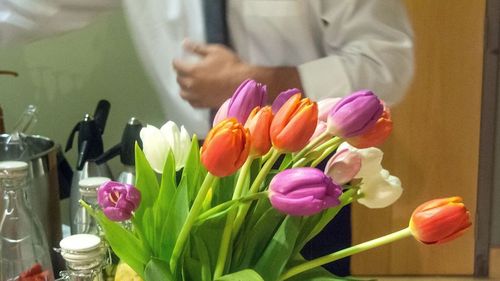Tuesday brought word of a new review for Finding Livelihood. Betsy Clover, program administrator, of the Christian Study Center of Gainesville, Florida, wrote a review in the center's publication: Reconsiderations: Exploring Christian Thought in the University Community.
Here's part of what Clover wrote:
"Part of the Study Center’s philosophy that serves as an anchor to me in my own thinking is the insight that good questions frame meaningful comprehension. Along this same line of thinking comes a bit of wisdom my friend recently shared with me: the opposite of arrogance is curiosity. These principles encourage me to a posture of humility and challenge me to look deeper than surface issues to find the question that will answer other questions. Nancy Nordenson does this through her writing. By approaching the subject of work with lyric style, she invites us all to embrace curiosity, and allow seemingly contradictory realities to shape understanding….[H]er her writing invites people to identify with her in shared experience. From this starting point she continually keeps her reflections in context of a transcendent reality by running creation alongside Creator, temporal together with eternal, and finite next to infinite."
Oh, this makes me happy. That she felt the invitation to curiosity and shared experience, that she saw the reflections within the context of a transcendent reality. That she wrote the words: "creation alongside Creator, temporal together with eternal, and finite next to infinite."
I love that she saw hope and empathy coming through.
She continued:
"Because her writing is not from an authoritative, prescriptive stance, she invites readers to think about work without reactionary over-correcting – she holds thoughts about how it is and ideas of how it should be in balance, allowing empathy and hope to come through. The entire book comes from an understanding that there is no textbook formula applicable to individuals grappling with livelihood."
You can read the review in full here. (Scroll to page 6.)
Of course I'm so pleased with this review, but I'm also pleased that this review came out of Gainesville. I came close to going to college at University of Florida in Gainesville alongside a number of my high school friends. I was actually enrolled but changed my mind at nearly the last minute, heading to Chicago instead, yet I always think of Gainesville and U of F with great fondness.
~~~
While you're at the link for the review, I hope you also read the piece starting on page 1, written by James Lynch, MD, an oncologist. He writes about approaching work – in his case, medicine, but he expands the view to whatever your work is – from a mode of incarnation and hospitality. As a medical writer and an occasional patient myself, I applaud this.
Here is some of what Lynch writes about his own work:
"I often start my medical conversation by asking my patients to tell me their stories leading up to and through their diagnosis. It is not infrequent that I hear, “Really? You want me to tell you the story?” They can’t imagine a busy physician actually wanting to hear the “back story.” But after we have a conversation and exchange thoughts and ideas for 15-20 minutes, something wonderful begins to happen. We become human to one another. I cannot help but see them as real, unique persons struggling with a disease and they see me as human too—offering to help and hopefully bringing some expertise."
"We become human to one another." Excellent!
~~~
[Photo: taken from my window seat about 10 minutes after leaving the gate at Tampa International Airport last week following my HS reunion. Given the distance from Tampa to Gainesville, my guess is that the plane is somewhat in the vicinity of Gainesville at this point in the flight, although likely further west. A fitting photograph, also, for a post about Finding Livelihood, given the plane motif in the book.]

